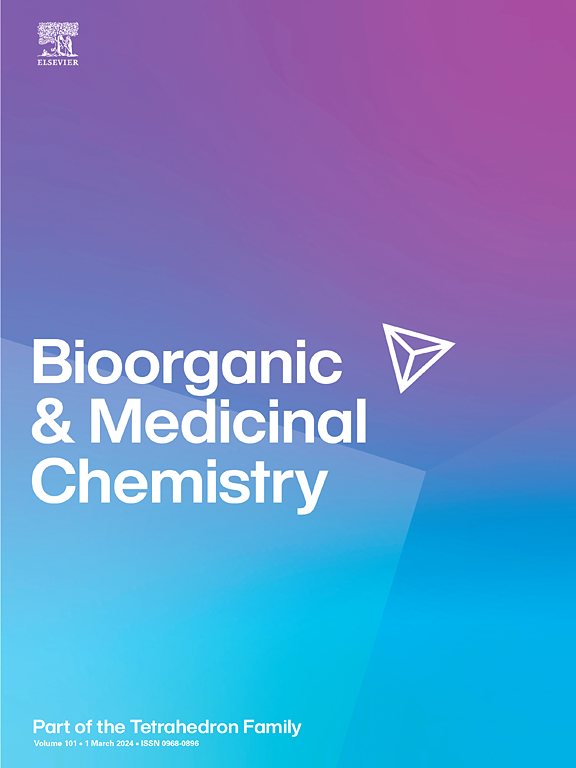靶向硫酸酯酶 2 的细胞穿透性反义肽核酸可抑制人类间充质干细胞的脂肪生成。
IF 3.3
3区 医学
Q2 BIOCHEMISTRY & MOLECULAR BIOLOGY
引用次数: 0
摘要
靶向调控人类间充质干细胞(hMSCs)向脂肪细胞转化的基因为解决肥胖问题提供了一种前景广阔的策略。在这项研究中,我们研究了细胞穿透性反义肽核酸(PNAs)的治疗潜力,PNAs旨在提高溶解度和杂交特性,专门靶向硫酸酯酶2(SULF2),硫酸酯酶2是间充质干细胞脂肪细胞和成骨细胞分化的潜在相互调节因子。经细胞穿透修饰的 PNA 低聚物能有效抑制 SULF2 基因转录,从而显著减少人骨髓间充质干细胞(hBM-MSCs)脂肪生成过程中脂肪连蛋白的合成和细胞内脂滴的积累。值得注意的是,PNA 低聚物化合物 5 表现出最有效的抗脂肪生成活性,其 IC50 值为 0.28 μM。这些研究结果表明,SULF2靶向细胞穿透性PNA寡聚体具有作为新型治疗剂治疗肥胖相关代谢疾病的潜力。本文章由计算机程序翻译,如有差异,请以英文原文为准。

Cell-penetrating anti-sense peptide nucleic acids targeting sulfatase 2 inhibit adipogenesis in human mesenchymal stem cells
Targeting the genes regulate the lineage commitment of human mesenchymal stem cells (hMSCs) to adipocytes provides a promising strategy for addressing obesity. In this study, we investigated the therapeutic potential of cell-penetrating anti-sense peptide nucleic acids (PNAs) designed to enhance solubility and hybridization properties, specifically targeting sulfatase 2 (SULF2), a potential reciprocal regulator of adipocyte and osteoblast differentiation in hMSCs. Cell-penetrating modified PNA oligomers effectively inhibit SULF2 gene transcription, leading to significant reductions in adiponectin protein synthesis and intracellular lipid droplet accumulation during adipogenesis in human bone marrow-derived MSCs (hBM-MSCs). Notably, PNA oligomer compound 5 exhibited the most potent anti-adipogenic activity, with an IC50 value of 0.28 μM. These findings show the potential of SULF2-targeting cell-penetrating PNA oligomers as novel therapeutic agents for obesity-related metabolic diseases.
求助全文
通过发布文献求助,成功后即可免费获取论文全文。
去求助
来源期刊

Bioorganic & Medicinal Chemistry
医学-生化与分子生物学
CiteScore
6.80
自引率
2.90%
发文量
413
审稿时长
17 days
期刊介绍:
Bioorganic & Medicinal Chemistry provides an international forum for the publication of full original research papers and critical reviews on molecular interactions in key biological targets such as receptors, channels, enzymes, nucleotides, lipids and saccharides.
The aim of the journal is to promote a better understanding at the molecular level of life processes, and living organisms, as well as the interaction of these with chemical agents. A special feature will be that colour illustrations will be reproduced at no charge to the author, provided that the Editor agrees that colour is essential to the information content of the illustration in question.
 求助内容:
求助内容: 应助结果提醒方式:
应助结果提醒方式:


